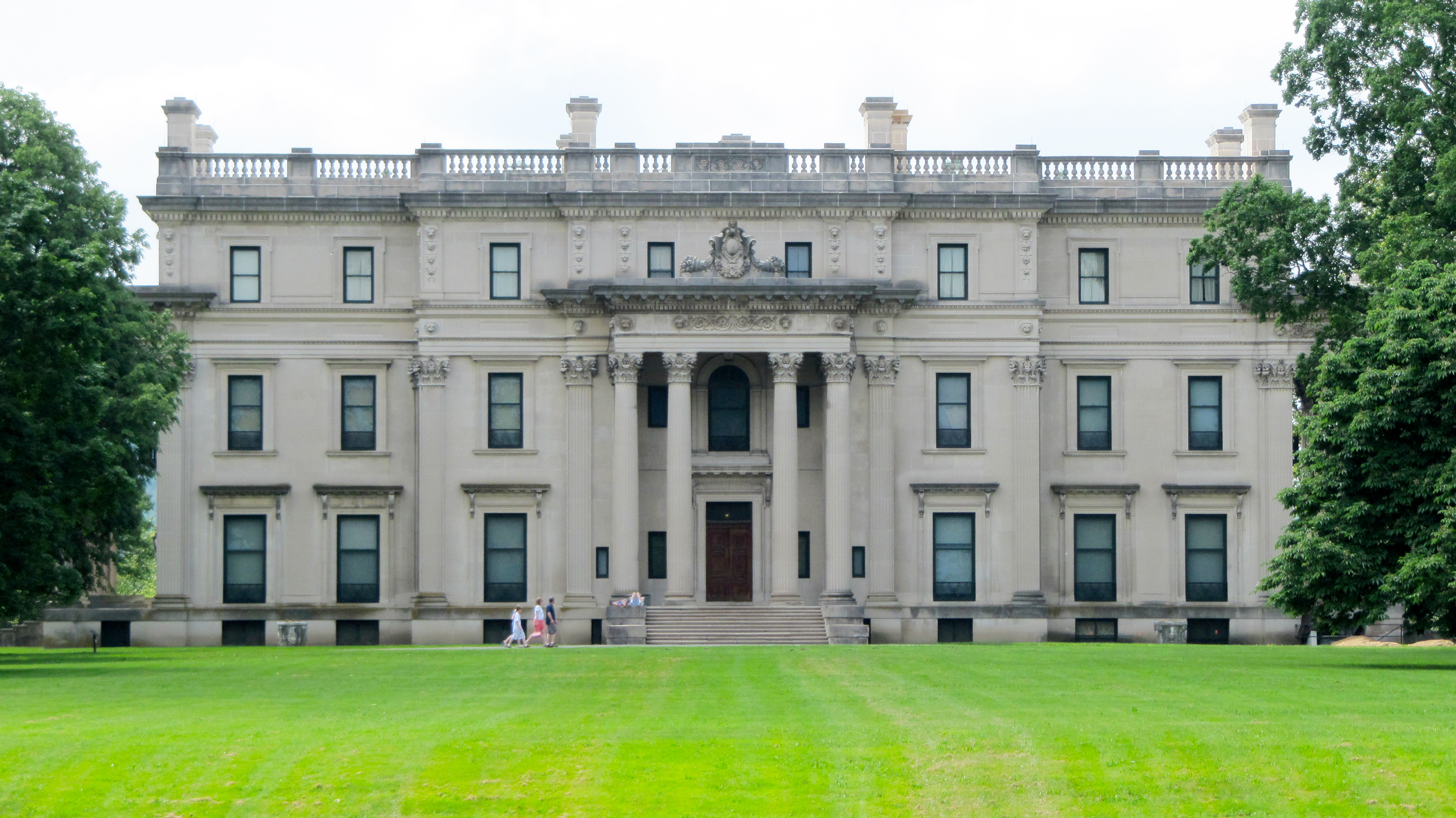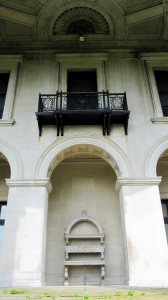Vanderbilt Mansion National Historic Site, located in Hyde Park, New York, is one of America’s premier examples of the country palaces built by wealthy industrialists during the Gilded Age.
The site includes 211 acres (85 ha) of the original larger property historically named Hyde Park. Situated on the east bank of the Hudson River, the property includes pleasure grounds with views of the river and the distant Catskill Mountains, formal gardens, natural woodlands, and numerous auxiliary structures. The grounds also include Italian Gardens that have been restored by the volunteer Frederick W. Vanderbilt Garden Association. Frederick William Vanderbilt (1856–1938) purchased the property in 1895 for use as a seasonal country residence.
The austere classicism, balance, and ornamentation of Hyde Park, designed for Frederick Vanderbilt by McKim, Mead & White, is a typical example of Beaux-Arts architecture.
Its main feature is a 54-room mansion by the distinguished architectural company McKim, Mead & White, with Charles Follen McKim designing the plan and Stanford White assisting by serving as an antique buyer. Designed and built between 1896–1899, the house is a good example of the Beaux-Arts architecture style and one of the architects’ finest residential projects. The interior of the mansion is an archetype of the American Renaissance, incorporating a range of European antiques and finely crafted period reproductions. Herter Brothers and A.H. Davenport were subcontractors who executed McKim’s interior designs. The Vanderbilts also hired Georges Glaenzer and Ogden Codman to decorate several rooms. E.F. Caldwell & Co. manufactured the majority of the lighting.
Mansion
The house has a classic Beaux-Arts plan with the major public rooms on its ground floor – the central Elliptical Hall, Dining Room, and Living Room – arranged in an axial arrangement parallel to the Hudson River. North and South Foyers provide transitional space from the Hall to the Dining Room and Living Room. Five secondary spaces are located off the Elliptical Hall: the Lobby, Den, Gold Room, Grand Stair Hall, and Lavatory. The second-floor rooms, comprising Mrs. Vanderbilt’s suite of Bedroom, Boudoir and Bathroom (designed by Ogden Codman), Mr. Vanderbilt’s Bedroom and Bathroom, Guest Bedrooms and Baths and the Linen Room, are disposed around the Second Floor Hall and the North and South Foyers. The third floor contains five additional guest bedrooms, and a Servants’ Hall separated from the guests’ rooms by a door at the main staircase. Supported by both concrete and steel, the Vanderbilt mansion was considered modern for its time. The mansion also included plumbing and forced hot air central heating and electric lighting which was powered by a hydroelectric plant built on the estate on the Crumb Elbow stream—the Vanderbilt estate had electric lighting before the surrounding area.
Gardens
Frederick’s interest and love of horticulture caused him to develop several large gardens on the Vanderbilt estate. These lavish gardens incorporated the formal “Italian” style. This meant that the beds were arranged in such a way that if you drew a line across the middle, either horizontally or vertically, one side of the line would mirror the other side. These formal gardens also consisted of multiple tiers, which depended on the type of plants. Each level was different. Frederick himself added the rose garden which contained almost 2000 “vintage” rose bushes along with other kinds of roses. The Vanderbilt gardens were grand and exquisite.
(description from Wikipedia)









